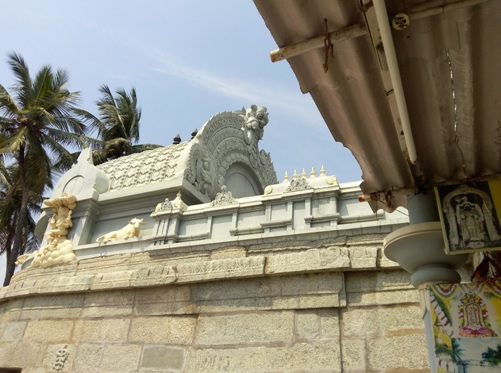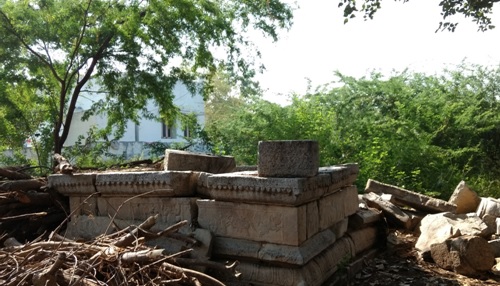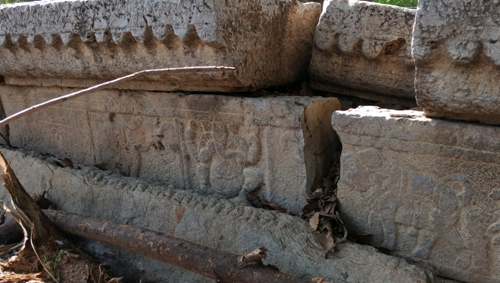The following Post was composed by Spandana . You can follow her on Twitter.
Temples have been quite important parts of our lives from ancient times. Temples have always been the centre of many vibrant activities. They might be social or cultural or spiritual or sometimes even political. In simple words we can say every temple has been a proto type of society (of that particular place, how it was and how it is).
I want to elaborate a point, which everyone may not understand or maybe don’t accept: modernisation of our ancient temples in the name of renovations. Yes, in our state there are many ancient temples with a great past. The good news is these temples are very much functional and the chain of devotion is passing to succeeding generations without break. But are many of these ancient temples looking that ancient?? No they are completely looking ultra-new. But along with being worshiping places, aren’t these temples our standing examples of our past and our heritage?? Isn’t this our responsibility to maintain their art, architecture, unique construction, and grandeur in the way they were?? But instead of preserving we are damaging these architectural marvels in the name of renovation. The picture below, is the temple which is supposed to be one of the ancient temples in our state. New look of the ancient temple
Srikakula Andhra Mahavishnu Temple
Photo Credit: highwayonlyway.com
I am not blaming the thought of renovating ancient temples, but am only saying that renovation should be done in the way that temple reflects its grand past with the help of new techniques, instead of completely demolishing and rebuilding. Here is an ideal example of renovation:

Chola period temple (Mulasthaneswara temple) in Gajulamandyam village, was renovated in a beautiful manner—anyone can get the inspiration. All these renovations were done by locals. They took extra effort to maintain the temple’s antiquity. They cleared all paint from the temple walls just to make the old carvings and architecture visible, which was a costly process. Locals taking pride of their past, and conserving their identity is a commendable act.

In the first picture u can see the temple before renovation, in the second picture after renovation (all the paint was removed.
Not all ancient temples are under Archaeological Survey of India (ASI). Many are with state endowment department. Though it is the endowment department’s job to conserve these old temples, they hardly understand or care about the antiquity or sanctity of the particular temple. Here I am taking another example of the beautiful temple in Kadapa district in Meenapuram Village:
Rajarajeswari Temple

This ancient temple is very much under the umbrella of endowment department, but this temple is conveniently neglected, due to its low income from Hundi. This temple has a beautiful stepwell in the front and ancient Kalyana mandapa made out by carving a rock. This intricately carved centuries old Kalyana mandapa completely collapsed recently. Not even a sign board or direction board is present to know about the temple. If one wants to reach this place, it’s only with help of locals.

It’s not the story of Meenapuram alone. There are many ancient temples under endowment department facing similar situation. We have examples of 500 year old SriKalahasthi gopuram and Bhavanarayana swamy temple raja gopuram collapsed, due to lack of timely care. This topic is just unending. I can write pages about this.

In brief: as a heritage lover, as a devotee, I wish our temples function well along with maintaining their antiquity and our heritage. I sincerely hope the endowment department takes some responsibility with such temples. As people, who respect our past and understand our heritage, it is our responsibility to educate people in our little circle.
HERITAGE IS OUR PRIDE
#Heritageisourpride #Heritagemustbepreserved
Jai Hind
Disclaimer: This article represents the opinions of the Author, and should not be considered a reflection of the views of the Andhra Cultural Portal. The Author is responsible for ensuring the factual veracity of the content, herein.







